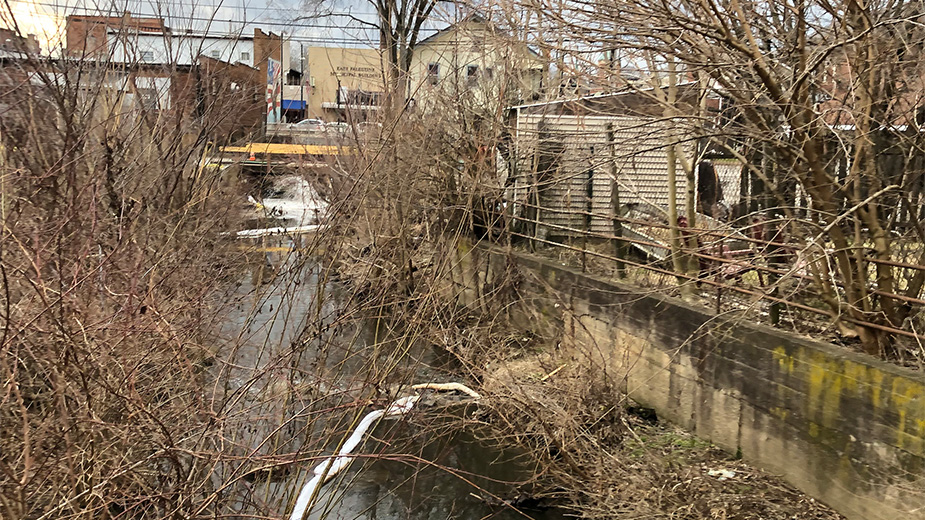Update: State Agencies Issue East Palestine Updates
EAST PALESTINE, Ohio – Gov. Mike DeWine, the Ohio Environmental Protection Agency, Ohio Department of Natural Resources and the Ohio Department of Agriculture have issued updates regarding work underway in the aftermath of a catastrophic train derailment here that unleashed hazardous chemicals into the air, soil and water.
In anticipation of rainfall, emergency response teams have put plans in place to prevent contaminants that have not yet been removed from the derailment site from washing into local waterways during the storms, the Ohio EPA said.
Sulphur Run has been dammed both west of the crash site and east of the crash site, leaving an empty creek bed between the two dams in the area of the crash.
Teams are pumping clean creek water from the point of the eastern dam, funneling it away from the dry creek bed area, and releasing it back into Sulphur Run at the western dam. This allows clean water to bypass the area of the derailment and prevents clean creek water from picking up contaminants and carrying them into other waterways.
This process will also control any contaminated rainwater runoff, which will run into the dry creek bed where it will be removed and remediated, the Ohio EPA said.
DeWine has sent a letter to the Centers of Disease Control and Prevention requesting that it immediately send medical experts to East Palestine to evaluate and counsel members of the community who have questions or are experiencing health symptoms.
The Ohio EPA also reassured residents that visible emissions in the area of the derailment yesterday were the result of steam used to heat a damaged railcar carrying paraffin wax. The melted wax was transported to another car and was not exposed to the air.
The Ohio EPA reported it continues to monitor a chemical plume of butyl acrylate in the Ohio River, noting its position is currently located near Gallipolis, Ohio, and will be near Huntington, West Virginia, sometime Friday.
Testing results indicate that the chemical is currently present at levels below three parts per billion, which is well below the 560 parts per billion that the CDC considers hazardous. No vinyl chloride has been detected in the Ohio River.
Butyl acrylate’s water solubility makes it harder to contain because it is absorbed by water instead of staying separate. For this reason, some butyl acrylate slipped beyond mitigation dams and booms and into the Ohio River.
Still, the Ohio River Valley Water Sanitation Commission and other agencies along the river are actively sampling water at strategic locations and are closing drinking water intakes in advance of the plume to prevent any butyl acrylate from entering the drinking water. This, combined with enhanced water treatment procedures, will ensure the safety of the drinking water supply for communities along the river.
Most contaminants did not enter local waterways, the OEPA said, but contaminants are pooling at the derailment site in puddles and ditches. A total of 942,000 gallons of contaminants and contaminated liquid have been removed from the immediate site. It is estimated that 110,000 gallons of contaminants at the site will be removed for proper disposal within the next 24 hours.
The U.S. EPA continues to monitor air purity in the East Palestine area, the agency reports. The latest air monitoring results provided by the U.S. EPA continue to show no presence of volatile organic compounds – or VOCs – from the train crash.
Similarly, the U.S. EPA reports that it is not detecting any airborne phosgene or mineral acids, which were chemicals of concern directly related to the controlled burn process. As such, the U.S. EPA has stopped air monitoring for these two specific contaminants.
Residents in and around the area may notice a smell from the site. This is because some of the contaminants that were released into the environment have a low odor threshold, which means that these contaminants can be smelled at levels much lower than what is considered hazardous.
To date, the U.S. EPA and an independent contractor supporting remediation efforts in East Palestine have tested the air inside 474 homes for the presence of VOCs released from the train derailment.
VOCs are also present in things such as paint, flooring, carpet, furniture, and cigarette smoke.
Although the testing in approximately 75 homes did show elevated levels of VOCs, further testing found that contaminants of concern from the derailment – vinyl chloride and hydrogen chloride – were not present in these homes.
Thirty additional homes are scheduled for testing today, the agency said. Air quality testing is voluntary for residents. To request home air testing, call 330 849 3919.
The OPEA reports that to date, 3,150 cubic yards of contaminated soil have been removed from the area of the derailment. This soil has been moved into containers and stockpiled for proper disposal.
Meanwhile, the Ohio Department of Natural Resources reports it has not received any additional reports of deceased wildlife. The total estimated number of aquatic animals killed remains at approximately 3,500.
Those animals were found in Sulphur Run, Leslie Run, Bull Creek, and a portion of the North Fork of Beaver Creek. Most of the fish appear to be small suckers, minnows, darters, and sculpin.
Officials believe most of these deaths were caused by the immediate release of contaminants into the water prior to mitigation efforts put in place following the crash. ODNR has not found any evidence of continued risk to aquatic life, but officers will continue sampling waterways.
In addition, the Ohio Department of Agriculture has received tissue samples from one 6-week-old beef calf that died on Feb. 11 in an area located approximately two miles from East Palestine. ODA’s Animal Disease Diagnostic Laboratory is performing a diagnostic work-up to determine if a cause of death can be identified.
The Ohio Department of Agriculture continues to assure Ohioans that its food supply is safe and the risk to livestock remains low following the East Palestine train derailment.
There is no information to suggest that pets are not safe outside, but if you believe your domestic animal has been sickened as a result of the train derailment, please contact your local veterinarian.
As a reminder, East Palestine residents who are struggling with anxiety and stress related to the derailment or are in need of emotional support may call the Ohio Careline at 800 720 9616 anytime 24/7 to talk with trained specialists for free, confidential support.Additional information related to the cleanup process, including contact phone numbers, press conference videos, FAQs, water and air sampling information, and previous updates can be found at HERE.
Pictured at top: Sulphur Run in East Palestine.
Published by The Business Journal, Youngstown, Ohio.



